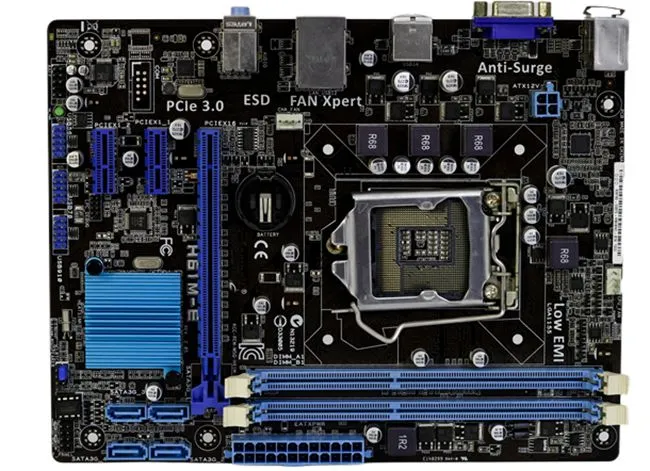PCB Printed Circuit Boards & Renewable Energy
PCB printed circuit boards play a pivotal part in the renewable vitality segment, serving as the spine for different clean energy advances. These fundamental components empower the effective operation of solar boards, wind turbines, and vitality capacity frameworks. As the need for renewable energy solutions keeps increasing, PCB assembly methods have changed to address the specific challenges that come with renewable energy uses. From enhancing control transformation effectiveness to progressing toughness in unforgiving situations, PCBs are driving development and reliability in the renewable vitality industry, clearing the way for a greener future.

The Role of PCBs in Renewable Energy Systems
PCB Applications in Solar Power
In the realm of solar energy, PCBs serve as the unsung heroes behind the scenes. These complicated electronic components are indispensable to the working of solar inverters, which convert the direct current (DC) generated by photovoltaic cells into rotating current (AC) suitable for network integration or family utilization. The PCB assembly handle for solar inverters requires accuracy and expertise to guarantee ideal execution and longevity.
Moreover, PCBs are utilized in charge controllers, which direct the flow of power from solar boards to batteries, anticipating cheating and expanding battery life. The plan and fabrication of these PCBs must account for the high voltages and streams included in solar control frameworks, requiring vigorous materials and fastidious quality control amid the assembly handle.
Wind Energy and PCB Technology
Wind turbines, another foundation of renewable energy, depend intensely on sophisticated PCB designs to work proficiently. The nacelle, which houses the generator and control frameworks atop the turbine tower, contains different PCBs that screen and direct different parameters such as wind speed, course, and control yield. These PCBs must withstand vibrations, temperature vacillations, and electromagnetic impedances, making their plan and assembly a complex building challenge.
The PCB assembly for wind turbine control systems often incorporates advanced features such as multi-layer designs and high-density interconnects to accommodate the complex circuitry required for optimal turbine performance. Additionally, PCBs play a crucial role in the pitch control systems that adjust blade angles to maximize energy capture and protect the turbine from excessive wind speeds.
Energy Storage Solutions and PCB Innovations
As renewable energy sources have become more predominant, the need for productive vitality capacity arrangements has developed exponentially. Battery management systems (BMS) are at the forefront of this innovation, and PCBs are essential components in these advanced control units. The PCB assembly for BMS units requires a sensitive adjustment of accuracy and toughness to guarantee accurate checking of battery cells and ideal charge/discharge cycles.
Furthermore, PCBs are instrumental in the improvement of keen lattice advances, encouraging the integration of renewable energy sources into existing control conveyance systems. These PCBs frequently consolidate progressed communication modules and sensors, empowering real-time observing and control of vitality streams between different sources and customers.
Challenges and Innovations in PCB Assembly for Renewable Energy
Thermal Management in High-Power Applications
One of the primary challenges in PCB assembly for renewable vitality frameworks is viable warm administration. Solar inverters and wind turbine control units frequently handle high control loads, creating critical heat that can compromise the longevity and reliability of electronic components. To address this issue, PCB designers and producers have created imaginative arrangements such as thermally conductive substrates, inserted warm sinks, and progressed cooling systems coordinates specifically into the PCB layout.
The use of materials like aluminum-backed PCBs has gained traction in renewable energy applications, offering superior heat dissipation properties compared to traditional FR-4 boards. Additionally, the strategic placement of components and the implementation of thermal vias during the PCB assembly process help optimize heat distribution and prevent hotspots that could lead to premature failure.
Environmental Resilience and Reliability
Renewable energy systems are often deployed in harsh environments, exposing PCBs to extreme temperatures, humidity, and corrosive elements. This necessitates the use of robust materials and protective coatings during the PCB assembly process to ensure long-term reliability. Conformal coatings, such as acrylic, silicone, or parylene, are frequently applied to PCBs used in outdoor renewable energy installations to protect against moisture, dust, and chemical contaminants.
Moreover, the selection of components with extended temperature ranges and the implementation of rigorous testing protocols during PCB assembly have become standard practices in the renewable energy sector. Accelerated life testing and thermal cycling help identify potential weaknesses in PCB designs before deployment, ensuring that the final products can withstand the rigors of real-world applications.
Miniaturization and Efficiency
As renewable energy technologies continue to evolve, there is a growing demand for more compact and efficient systems. This trend has driven innovations in PCB assembly techniques, such as the adoption of high-density interconnect (HDI) technologies and the use of flexible PCBs. HDI allows for increased component density and reduced board size without compromising functionality, while flexible PCBs enable creative design solutions for space-constrained applications like wearable solar devices or curved wind turbine blades.
The push for higher efficiency has also led to the integration of advanced power electronics components, such as wide-bandgap semiconductors like silicon carbide (SiC) and gallium nitride (GaN), into PCB designs for renewable energy applications. These materials offer superior performance in high-power and high-frequency applications, but their integration requires specialized PCB assembly techniques and thermal management strategies.
Future Trends in PCB Technology for Renewable Energy
Smart Grid Integration and IoT Connectivity
The future of renewable energy lies in the development of smart, interconnected systems that can optimize power generation, distribution, and consumption. PCBs will play a pivotal role in this evolution, serving as the foundation for IoT-enabled devices that can communicate and coordinate within the smart grid ecosystem. The PCB assembly process for these next-generation devices will likely incorporate advanced wireless communication modules, low-power microcontrollers, and sophisticated sensor arrays.
As the Internet of Things (IoT) continues to expand, PCBs designed for renewable energy applications will need to balance connectivity features with robust security measures to protect against cyber threats. This may involve the integration of hardware-based encryption modules and secure element chips during the PCB assembly stage, ensuring that critical infrastructure remains protected from potential attacks.
Advanced Materials and Manufacturing Techniques
The quest for more efficient and sustainable renewable energy systems is driving research into novel PCB materials and manufacturing techniques. Biodegradable and recyclable PCB substrates are being explored as environmentally friendly alternatives to traditional materials, aligning with the overall sustainability goals of the renewable energy sector. These eco-friendly PCBs may require specialized assembly processes and handling procedures to maintain their unique properties.
Additive manufacturing technologies, such as 3D printing of electronic circuits, are also poised to revolutionize PCB assembly for renewable energy applications. These techniques offer the potential for rapid prototyping, customization, and on-demand production of complex PCB designs, potentially reducing lead times and costs associated with traditional manufacturing methods.
Energy Harvesting and Self-Powered Systems
As renewable energy technologies become more pervasive, there is growing interest in developing self-powered electronic systems that can operate autonomously in remote or inaccessible locations. PCBs designed for energy harvesting applications, such as those incorporating thermoelectric generators or piezoelectric elements, are likely to become more common in the renewable energy landscape. The PCB assembly process for these systems must account for the integration of ultra-low-power components and energy storage solutions to maximize efficiency and longevity.
Furthermore, the development of PCBs capable of harvesting ambient energy from their environment could lead to new possibilities in distributed energy generation and management. These innovative PCB designs may incorporate flexible solar cells, kinetic energy harvesters, or even radio frequency (RF) energy scavenging circuits, pushing the boundaries of what is possible in renewable energy systems.
Conclusion
The symbiotic relationship between PCB technology and renewable energy continues to drive innovation and sustainability in the power generation sector. As we move towards a greener future, the role of PCB assembly in enabling efficient, reliable, and intelligent renewable energy systems cannot be overstated. From optimizing the performance of solar and wind energy installations to facilitating the integration of smart grid technologies, PCBs are at the heart of the clean energy revolution.
By embracing cutting-edge PCB assembly techniques and innovative design approaches, the renewable energy industry is well-positioned to meet the growing global demand for clean, reliable power. As PCB technology continues to advance, it will undoubtedly play a crucial role in shaping the future of renewable energy and driving us towards a more sustainable world.
Reliable PCB Solutions for Renewable Energy OEMs | Ring PCB
Ring PCB Technology Co., Limited offers comprehensive one-stop PCB and PCBA services tailored for renewable energy OEMs. With 17 years of expertise, we deliver innovative, reliable, and cost-effective solutions for industries including electronics and automotive. Our integrated PCBA services encompass full assembly support, DFM/DFA optimization, and rigorous quality control, ensuring top-tier results for your renewable energy projects. Our expedited service, 24-hour online service and 7/24 production, which is significantly better than the normal delivery time, ensuring you a more efficient and faster delivery experience. Contact us at [email protected] to explore how our expertise can power your sustainable innovations.
References
1. Johnson, A. R., & Smith, B. T. (2022). Advanced PCB Design Techniques for Renewable Energy Applications. Journal of Sustainable Electronics, 15(3), 287-302.
2. Li, X., Zhang, Y., & Wang, L. (2021). Thermal Management Strategies in PCB Assembly for High-Power Solar Inverters. Renewable Energy Systems Engineering, 9(2), 145-160.
3. Patel, M. K., & Nguyen, T. H. (2023). Integration of Wide-Bandgap Semiconductors in PCB Designs for Wind Turbine Control Systems. IEEE Transactions on Power Electronics, 38(4), 4125-4140.
4. Rodriguez, C., & Chen, H. (2020). Environmental Resilience of PCBs in Outdoor Renewable Energy Installations: A Comprehensive Review. Sustainable Materials and Technologies, 24, e00150.
5. Williams, E. D., & Brown, R. J. (2022). The Role of PCB Technology in Smart Grid Integration for Renewable Energy Systems. Energy Policy, 162, 112803.

Welcome to Ring PCB! Share your inquiry, and receive a tailored quotation!

Ring PCB, your trusted partner for PCB & PCBA Full Turnkey Solutions



